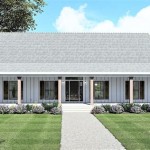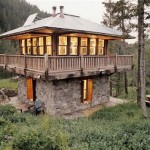Small River House Plans On Stilts: Essential Considerations
When it comes to building a home on stilts over a river, there are several essential aspects to consider to ensure a successful and safe project.
1. Site Assessment:
Thoroughly assessing the riverbank and surroundings is crucial. Factors such as soil conditions, flood risks, water depth, and current speed must be evaluated to determine the suitability of the site for a stilt house.
2. Building Codes and Regulations:
Adhering to local building codes and regulations is imperative. These guidelines may specify requirements for foundation design, materials, and construction methods specific to stilt houses.
3. Foundation Design:
The foundation is the backbone of a stilt house. It must be designed to withstand the forces of the water and any potential flooding. Common foundation options include concrete piers, steel columns, and wooden pilings.
4. Structural Integrity:
The structural integrity of the house is paramount. The framework, including beams, joists, and decking, must be robust enough to support the weight of the building and withstand wind loads.
5. Materials Selection:
Choosing appropriate materials is essential for durability and longevity in a river environment. Pressure-treated wood, marine-grade plywood, and corrosion-resistant fasteners are often used to protect against water damage.
6. Access and Accessibility:
Consider the accessibility of the house, both by land and by water. Stairs, ramps, or elevators may be necessary to provide convenient access for residents and visitors.
7. Utilities and Services:
Ensure that the house has access to essential utilities, such as electricity, water, and sewage. Plan for underground or overhead connections, as well as backup systems in case of emergencies.
8. Insulation and Ventilation:
Proper insulation and ventilation are vital for a comfortable living environment. Insulation helps regulate temperature, while adequate ventilation prevents moisture buildup and promotes air circulation.
9. Landscape and Riverbank Protection:
Consider the impact of the house on the surrounding environment. Native plants and erosion control measures can help protect the riverbank and maintain the natural ecosystem.
10. Environmental Sustainability:
Strive for environmentally friendly construction practices and materials to minimize the ecological impact of the house. Solar panels, rainwater collection systems, and energy-efficient appliances can contribute to sustainability.
By carefully considering these essential aspects, homeowners can create beautiful and functional small river house plans on stilts that provide a unique and enjoyable living experience.

These Lake House Plans Will Make Your Vacation Retreat Feel Like Home Southern Beach

8 000 Riverfront Cabin House On Stilts Stilt Plans Camp

Custom Home Builders House On Stilts Stilt Plans Tiny Beach

Elevated Piling And Stilt House Plans Coastal From Home

Family S 576 Sq Ft Stilt Beach House

House On Stilts Stilt Plans Beach

Elevated Piling And Stilt House Plans Coastal From Home

Homes On Stilts Insteading

Elevated Piling And Stilt House Plans Coastal From Home

Homes On Stilts Insteading








